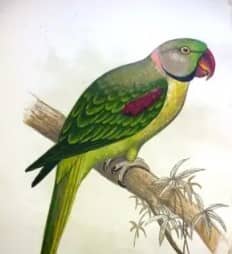Abou-Zabel Veterinary School
Albert Veterinary College
Aldershot Veterinary Medical Association
American Veterinary College
Ancient Egyptian literature
Army Veterinary Department
Army Veterinary School Aldershot
Army Veterinary School Poona
Australasian Veterinary Medical Association
Baltimore Veterinary School
Bath and West of England Society
Bengal Veterinary Institution
Bombay Veterinary College
Border Counties Veterinary Medical Association
Border Counties Veterinary Medical Society
Bracy Clark; biographical research
British Association for the Advancement of Science
British Dairy Farmers Association
British Medical Association
British National Veterinary Congress
British National Veterinary Medical Association
Brussels Veterinary School
Cattle Defence Association
Central Agricultural Society
Central Chamber of Agriculture
Central Veterinary Association of Ireland
Central Veterinary Medical Association
Central Veterinary Medical Society
Cirencester Agricultural College
Cirencester Royal Agricultural College
colonial veterinary service
Cuckfield District Agricultural Association
Devon County Veterinary Medical Association
Dresden Veterinary School
Dublin Veterinary College
Eastern Counties Veterinary Medical Association
Eastern Counties Veterinary Medical Society
Edinburgh Botanical Society
Edinburgh Metropolitan Veterinary Medical Society
Edinburgh New Veterinary College
Edinburgh Veterinary Medical Association
Edinburgh Veterinary Medical Society
Edinburgh Veterinary School
eighteenth century veterinary history
eleventh century veterinary history
English Agricultural Society
Epidemiological Society of London
fifteenth century veterinary history
fourteenth century veterinary history
General Sir Redvers Buller
Glasgow Agricultural Discussion Society
Glasgow Veterinary College
Glasgow Veterinary College Medical Association
Glasgow Veterinary College Veterinary Medical Association
Glasgow Veterinary Medical Association
Glasgow Veterinary Medical Society
Hertfordshire Veterinary Medical Association
Highland & Agricultural Society
Highland and Agricultural Society
Highland and Agricultural Society of Scotland
Home Cattle Defence Association
International Veterinary Congress
International Women's Day
Ireland Glasgow Veterinary College
Irish Central Veterinary Association
Irish Central Veterinary Medical Association
Irish Central Veterinary Medical Society
John Gamgee's Veterinary College
Kingscote Agricultural Association
Lahore Veterinary College
Lancashire Veterinary Medical Association
Lancashire Veterinary Medical Society
Leeds and West Riding Medicochirurgical Society
Lincolnshire Veterinary Medical Association
Lincolnshire Veterinary Medical Society
Liverpool Veterinary Medical Association
Liverpool Veterinary Medical Society
living conditions (animal)
London Veterinary College
London Veterinary Medical Society
London Veterinary Society
Medical Examining Committee
Medical Society of London
Midland Counties Veterinary Medical Association
Montreal Veterinary College
Montreal Veterinary Medical Association
Montreal Veterinary Medical College
Mutual Veterinary Benovelent Society
National Veterinary Association
National Veterinary Association of Ireland
National Veterinary Benevolent and Mutual Benevolent Defence Society
National Veterinary Benevolent and Mutual Defence Association
National Veterinary Benevolent and Mutual Defence Society
National Veterinary Benevolent Society
National Veterinary Medical Association
New South Wales Veterinary Medical Association
New York College of Veterinary Surgeons
New York Veterinary College
New York Veterinary Society
nineteenth century veterinary history
Norfolk and Eastern Counties Veterinary Medical Association
Norfolk and Eastern Counties Veterinary Medical Society
Norfolk Central Committee
Norfolk Eastern Counties Veterinary Medical Association
North of England Veterinary Medical Association
North of Ireland Veterinary Medical Society
North of Scotland Veterinary Medical Association
North of Scotland Veterinary Medical Society
Northumberland and Durham Medical Society
Ontario Veterinary Association
Ontario Veterinary College
Ontario Veterinary College Medical Society
Ontario Veterinary Medical Association
Ontario Veterinary Medical Society
Ontario Veterinary School
open educational resources
Pathological Society of Edinburgh
Pathological Society of England
Pathological Society of London
Philadelphia Veterinary College
Provincial Veterinary Medical Association
Renfrewshire Agricultural Society
Rothamsted Experimental Station
Royal (Dick) Veterinary College Edinburgh
Royal Agricultural College
Royal Agricultural Society
Royal Agricultural Society of Agriculture
Royal Agricultural Society of England
Royal and Central Society of Agriculture
Royal Army Veterinary Corps
Royal College of Physicians
Royal College of Surgeons
Royal College of Veterinary Surgeons
Royal Counties Veterinary Medical Association
Royal Geographical Society
Royal Photographic Society
Royal Scottish Veterinary Association
Royal Scottish Veterinary Medical Society
Royal Scottish Veterinary Society
Royal Society for the Prevention of Cruelty to Animals
Royal Society of Medicine
Royal United Service Institution
Royal Veterinary College Medical Society
Royal Veterinary College of Ireland
Royal Veterinary College Veterinary Medical Association
Scotch Veterinary College
Scottish Central Veterinary Medical Association
Scottish Central Veterinary Medical Society
Scottish Metropolitan Veterinary Association
Scottish Metropolitan Veterinary Medical Association
Scottish Metropolitan Veterinary Medical Practice
Scottish Metropolitan Veterinary Medical Society
Scottish Veterinary Medical Associations
Scottish Veterinary Medical Societies
Scottish Veterinary Medical Society
Scottish Veterinary Societies
seventeenth century veterinary history
sixteenth century veterinary history
South Durham and North Yorkshire Veterinary Medical Association
South of England Veterinary Medical Association
Southern Counties Veterinary Medical Association
Southern Counties Veterinary Medical Associations
St Pancras Veterinary School
thirteenth century veterinary history
Toulouse Veterinary School
twelfth century veterinary history
United States Veterinary Medical Association
United Veterinary Surgeons Club
unqualified practitioners
unqualified veterinary surgeons
Veterinary Benevolent and Mutual Defence Society
Veterinary Benevolent Association
Veterinary Benevolent Institution
Veterinary Benevolent Society
Veterinary College Institute
Veterinary Defence Association
Veterinary Defence Society
Veterinary Examining Committee
Veterinary History Society
Veterinary Medical Association
Veterinary Medical Association of Ireland
Veterinary Medical Charitable Society
veterinary medical school
Veterinary Medical Society
Veterinary Mutual Defence Association
Veterinary Mutual Defence Fund
Veterinary Mutual Defence Society
veterinary operative surgery
Veterinary Protection Society
veterinary qualifications
Veterinary Surgeons Act 1881
Victoria Veterinary Benevolent Fund
West of England Agricultural Society
West of England Veterinary Medical Association
West of Scotland Veterinary Association
West of Scotland Veterinary Medical Association
West of Scotland Veterinary Medical Society
Western Counties Veterinary Medical Association
Woolwich Veterinary Hospital
Worcester Agricultural College
Yorkshire Veterinary Medical Association
Yorkshire Veterinary Medical Society



 https://mlezrtjbthxp.i.optimole.com/w:auto/h:auto/q:mauto/f:best/https://vethistory.rcvsknowledge.org/wp-content/uploads/2017/11/grayshop.png 313 222 Clare Boulton https://rcvsk-images-bucket.s3.eu-west-1.amazonaws.com/rcvsk-logos/rcvsk-logo-light-background.svg Clare Boulton2014-03-30 20:31:142023-11-14 12:15:14117 Earls Court Road
https://mlezrtjbthxp.i.optimole.com/w:auto/h:auto/q:mauto/f:best/https://vethistory.rcvsknowledge.org/wp-content/uploads/2017/11/grayshop.png 313 222 Clare Boulton https://rcvsk-images-bucket.s3.eu-west-1.amazonaws.com/rcvsk-logos/rcvsk-logo-light-background.svg Clare Boulton2014-03-30 20:31:142023-11-14 12:15:14117 Earls Court Road


